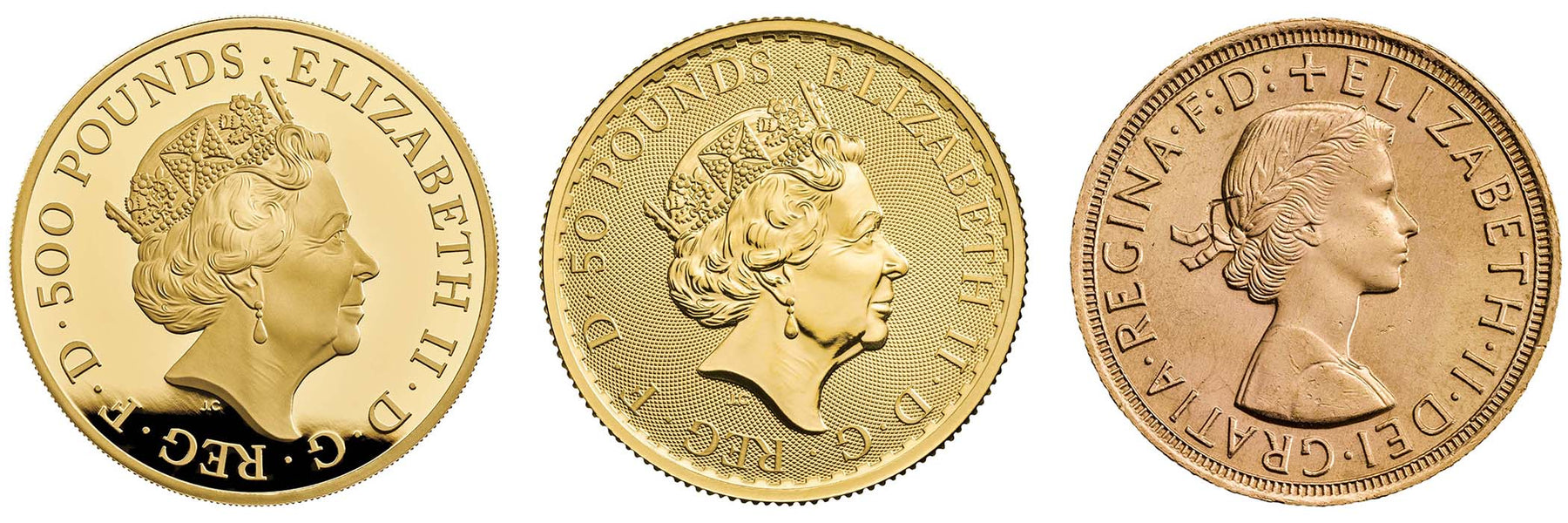
Proof vs Brilliant Uncirculated vs Circulation - A Guide to Coin Manufacturing Standards
The Royal Mint and most world mints produce coins in at least three "finishes”, these are proof, brilliant uncirculated and coins for general circulation. These are what are known as striking standards with the main differences between each being the level detail in the design elements, the cameo effect of the design elements against the fields and the total number of coins produced.
Proof Coins
Proof coins represent the highest standards of coinage. They are produced in almost all metals and they are unparalleled in both their level of detail and the aesthetics of their finish. It is these exceptional levels of craftsmanship which make them sought after by collectors who pride themselves on owning exceptional coins.
How are proof coins made? Proof coins are struck from dies (“stamps” engraved with the obverse and reverse images) which are polished by hand to ensure that any imperfections are removed, in addition the devices (design elements) are laser etched to give the distinct cameo effect between the fields (background) and devices. The blanks (a coin which is yet to be struck) are also specially treated and polished before striking. The polished blanks are hand fed into the coin press and are struck up to six times with lower pressure than brilliant uncirculated and circulation coins, the additional strikes are what gives these coins their high relief and superior level of detail. After striking, each coin is inspected for flaws and blemishes and the dies are then cleaned before the next strike strike to ensure there is no detritus which can result in a substandard coin. Each proof die can strike 200 - 400 coins before it needs to be repolished. It is this attention to detail and extra care which means no more than 50 proof coins can be made per hour from one press and it is for this reason that proof coins are issued in limited quantities.

Reverse of a gold proof fifty pence, note the cameo effect between Britannia and the reflective fields.
Brilliant Uncirculated Coins
Brilliant uncirculated coins, also known as BU, B.Unc, or to some“proof-like” coins, are the next highest standard after proof coins. Like proof coins they are struck from hand finished dies however the devices are not laser treated and they are fed into the coin press by machine and only struck twice. As a result, these BU coins are produced at a faster rate than proof coins and show a higher level of detail compared to coins minted for circulation however they lack the cameo effect of proof coins and are often issued in high quantities.

Circulation Coins
Circulation coins, also known as business strikes, are the coins which are circulated and used as currency. Unlike proof and brilliant uncirculated coins, the production of these coins is almost entirely automated. Coin dies are carved by digital engraving machine, unpolished blanks are machine fed into the coining press which strikes each coin once with around sixty tonnes of pressure before being ejected into a storage hopper. Each press can produce around 50,000 coins per hour. Due to the volume produced and reduced quality control, as a result of not being “collectable coins”, it is circulation coins that we encounter the most erroneous examples of.

2009 Kew Gardens 50 pence, note the softness to detail and contact marks through circulation
Bath Spa Capital offers a range of proof and brilliant uncirculated. It is the extra care, attention to detail and low mintages which make these coins amongst the most popular of collectables. In addition to this, it is their face value and status as legal tender and exemption from Capital Gains Tax which makes them highly sought after by collectors and investors.